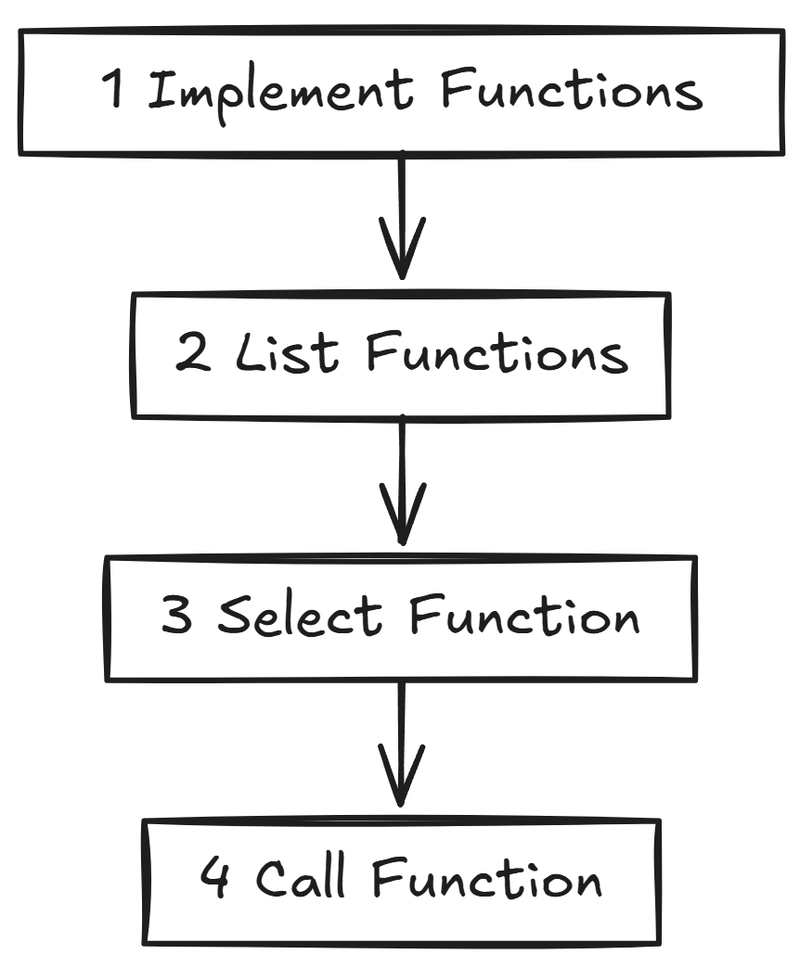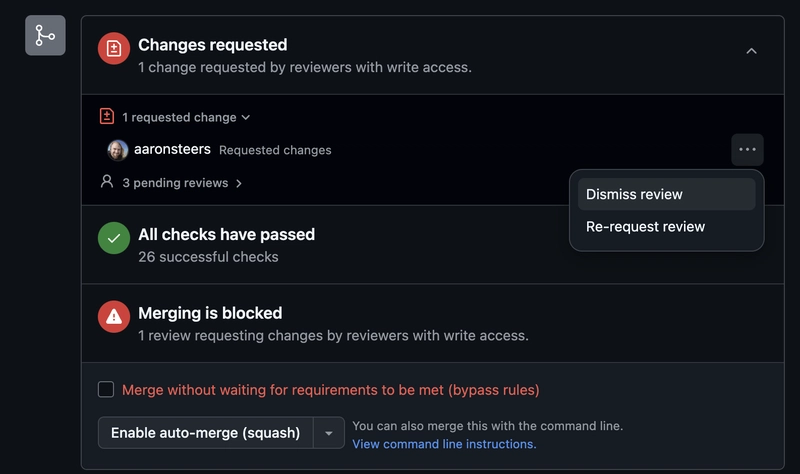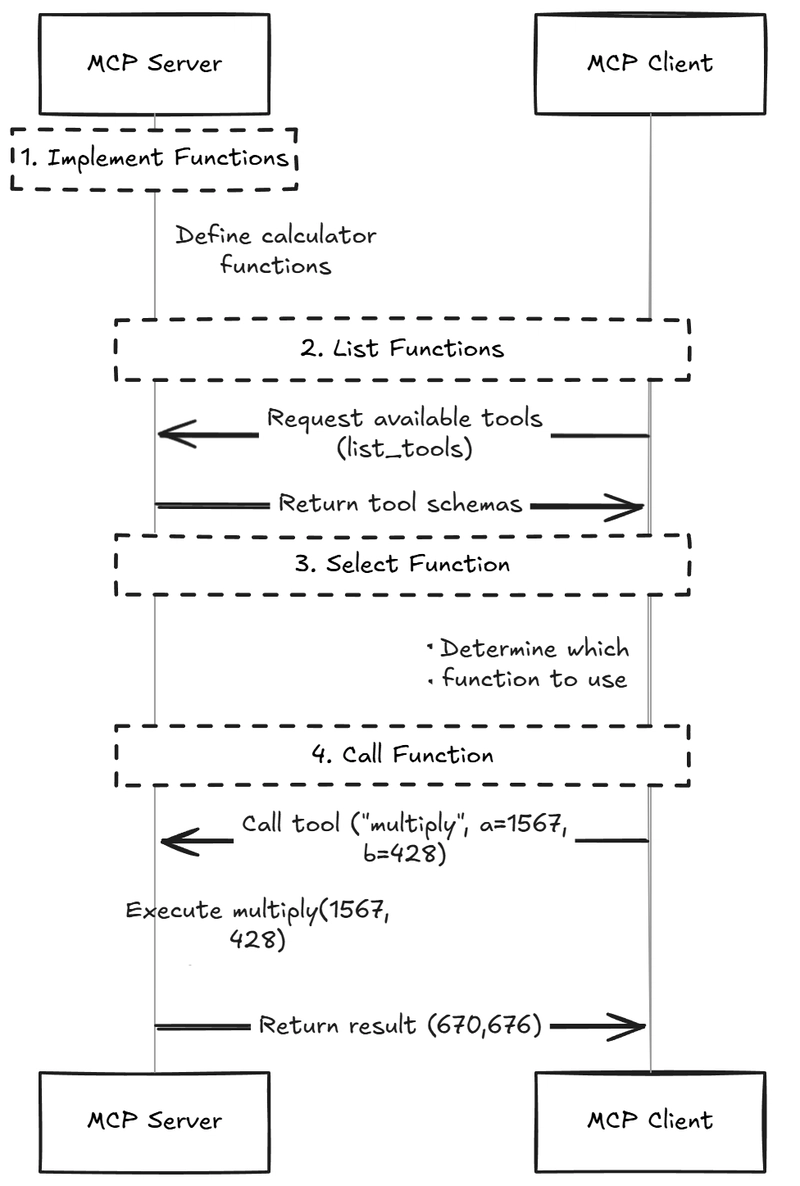MCP Simply Explained: Function Calling Rebranded or Genuine Breakthrough?
Ever wished your AI assistant could actually do more than just chat? Like send real emails, schedule your meetings, analyze your spreadsheets, or search the web for you? The Model Context Protocol (MCP) aims to make this possible, but is it really revolutionary? Let's break it down! 1. Introduction: The Model Context Protocol Buzz Let's face it - getting AI models to do real-world tasks has always been hit or miss. Sure, ChatGPT can write you a nice email... but can it actually send it? Claude can describe how to analyze your data... but can it run the analysis for you? Wouldn't it be amazing if your AI assistant could seamlessly tap into all your favorite tools and actually get things done? That's exactly why Anthropic introduced MCP in November 2024, and it's taking the AI world by storm! The GitHub repo skyrocketed to 30K stars in less than six months. Even tech giants quickly jumped on board - Google planned to integrate it into their systems, and OpenAI released MCP for their agent. But here's what everyone's wondering: Is MCP truly revolutionary, or just a fancy rebrand of what we already had? Despite all the excitement, there's still plenty of confusion about what MCP actually is. What is it exactly? Is it another AI agent? A sophisticated tool routing management system? Or something else entirely? And with all the hype surrounding it, is it truly revolutionary or just an incremental improvement? In this simple tutorial, we'll: Start with the basics: how function calling (the predecessor to MCP) actually works Build up to MCP by showing what problems it solves that function calling couldn't Compare both approaches so you can spot the key differences Show real examples of what MCP can (and can't) do for you Help you understand if MCP is worth getting excited about No tech jargon overload or marketing hype - just minimal, working code examples and a clear explanation of why MCP might be the missing piece that finally lets your AI assistant become the productivity partner you've been waiting for. To see these concepts in action, check out our simple working example code that demonstrates both function calling and MCP side-by-side. Let's dive in! 2. Function Calling in Plain English To understand MCP, we first need to understand function calling - its predecessor. Think of function calling as teaching your AI to "phone a friend" when it needs expert help. The AI handles the conversation, but knows when to call in specialists for tasks it's bad at. And AI models can be terrible at certain tasks! Ever asked ChatGPT how many r's are in "strawberry" and watched it confidently give the wrong answer? Or seen Claude botch simple math? Function calling fixes this by connecting AIs to specialized tools that actually work. Let's use a calculator as our working example. When a user asks "What is 1,567 × 428?", instead of the AI trying to calculate it (and probably failing), function calling lets it use a real calculator and return the correct answer: 670,676. Here's what a complete function calling workflow looks like: Implement Functions: First, we create our calculator functions (add, multiply, etc.) List Functions: We tell the AI what calculator functions are available Select Function: When user asks "What is 1,567 multiplied by 428?", AI selects "multiply_numbers" with parameters a=1567, b=428 Call Function: The system executes multiply_numbers(1567, 428) and returns 670,676 to the user Step 1: Implement Functions First, we build basic calculator functions: def add_numbers(a, b): return a + b def subtract_numbers(a, b): return a - b def multiply_numbers(a, b): return a * b def divide_numbers(a, b): return a / b Nothing fancy here - just functions that take two numbers and do math. The magic happens when we connect them to our AI. Step 2: List Functions Now we need to describe these functions to the AI. It's like creating a menu that says, "Here's what's available, here's what each thing does, and here's what you need to provide": def get_functions(): return [ { "type": "function", "function": { "name": "add_numbers", "description": "Add two numbers together", "parameters": { "type": "object", "properties": { "a": { "type": "number", "description": "First number" }, "b": { "type": "number", "description": "Second number" } } } } }, ... # Other operations follow the same pattern ] Step 3: Select Function When a user asks something, the AI needs to figure out which tool to use. There are two main ways to do this: The Official Way (APIs) Most AI providers now have built-in methods for this: def select_function(tools, question): from openai import OpenAI client

Ever wished your AI assistant could actually do more than just chat? Like send real emails, schedule your meetings, analyze your spreadsheets, or search the web for you? The Model Context Protocol (MCP) aims to make this possible, but is it really revolutionary? Let's break it down!
1. Introduction: The Model Context Protocol Buzz
Let's face it - getting AI models to do real-world tasks has always been hit or miss. Sure, ChatGPT can write you a nice email... but can it actually send it? Claude can describe how to analyze your data... but can it run the analysis for you? Wouldn't it be amazing if your AI assistant could seamlessly tap into all your favorite tools and actually get things done?
That's exactly why Anthropic introduced MCP in November 2024, and it's taking the AI world by storm! The GitHub repo skyrocketed to 30K stars in less than six months. Even tech giants quickly jumped on board - Google planned to integrate it into their systems, and OpenAI released MCP for their agent.
But here's what everyone's wondering: Is MCP truly revolutionary, or just a fancy rebrand of what we already had? Despite all the excitement, there's still plenty of confusion about what MCP actually is. What is it exactly? Is it another AI agent? A sophisticated tool routing management system? Or something else entirely? And with all the hype surrounding it, is it truly revolutionary or just an incremental improvement?
In this simple tutorial, we'll:
- Start with the basics: how function calling (the predecessor to MCP) actually works
- Build up to MCP by showing what problems it solves that function calling couldn't
- Compare both approaches so you can spot the key differences
- Show real examples of what MCP can (and can't) do for you
- Help you understand if MCP is worth getting excited about
No tech jargon overload or marketing hype - just minimal, working code examples and a clear explanation of why MCP might be the missing piece that finally lets your AI assistant become the productivity partner you've been waiting for. To see these concepts in action, check out our simple working example code that demonstrates both function calling and MCP side-by-side. Let's dive in!
2. Function Calling in Plain English
To understand MCP, we first need to understand function calling - its predecessor. Think of function calling as teaching your AI to "phone a friend" when it needs expert help. The AI handles the conversation, but knows when to call in specialists for tasks it's bad at. And AI models can be terrible at certain tasks! Ever asked ChatGPT how many r's are in "strawberry" and watched it confidently give the wrong answer? Or seen Claude botch simple math? Function calling fixes this by connecting AIs to specialized tools that actually work.
Let's use a calculator as our working example. When a user asks "What is 1,567 × 428?", instead of the AI trying to calculate it (and probably failing), function calling lets it use a real calculator and return the correct answer: 670,676.
Here's what a complete function calling workflow looks like:
- Implement Functions: First, we create our calculator functions (add, multiply, etc.)
- List Functions: We tell the AI what calculator functions are available
- Select Function: When user asks "What is 1,567 multiplied by 428?", AI selects "multiply_numbers" with parameters a=1567, b=428
- Call Function: The system executes multiply_numbers(1567, 428) and returns 670,676 to the user
Step 1: Implement Functions
First, we build basic calculator functions:
def add_numbers(a, b): return a + b
def subtract_numbers(a, b): return a - b
def multiply_numbers(a, b): return a * b
def divide_numbers(a, b): return a / b
Nothing fancy here - just functions that take two numbers and do math. The magic happens when we connect them to our AI.
Step 2: List Functions
Now we need to describe these functions to the AI. It's like creating a menu that says, "Here's what's available, here's what each thing does, and here's what you need to provide":
def get_functions():
return [
{
"type": "function",
"function": {
"name": "add_numbers",
"description": "Add two numbers together",
"parameters": {
"type": "object",
"properties": {
"a": { "type": "number", "description": "First number" },
"b": { "type": "number", "description": "Second number" }
}
}
}
},
... # Other operations follow the same pattern
]
Step 3: Select Function
When a user asks something, the AI needs to figure out which tool to use. There are two main ways to do this:
The Official Way (APIs)
Most AI providers now have built-in methods for this:
def select_function(tools, question):
from openai import OpenAI
client = OpenAI()
response = client.chat.completions.create(
model="gpt-4o",
messages=[{"role": "user", "content": question}],
tools=tools
)
# Get the function details
tool_call = response.choices[0].message.tool_calls[0]
function_name = tool_call.function.name
function_args = json.loads(tool_call.function.arguments)
return function_name, function_args
The DIY Way (Clever Prompting)
If your model doesn't have function calling built in, you can hack it with a smart prompt:
def select_function(tools, question):
from openai import OpenAI
import yaml
prompt = f"""
## Question
{question}
## Tools
{tools}
## Respond in this format:
```yml
thinking:
tool:
name:
parameters:
:
...
```"""
client = OpenAI()
response = client.chat.completions.create(
model="gpt-4o",
messages=[{"role": "user", "content": prompt}]
)
response_text = response.choices[0].message.content
yaml_str = response_text.split("```yml")[1].split("```")[0].strip()
result_data = yaml.safe_load(yaml_str)
function_name = result_data["tool"]["name"]
parameters = result_data["tool"]["parameters"]
return function_name, parameters
Either way, if you ask "What's 1,567 multiplied by 428?", you'll get back something like:
("multiply_numbers", {"a": 1567, "b": 428})
Step 4: Call Function
Finally, we run the chosen function with the extracted numbers:
def call_function(function_name, arguments):
# Map function names to actual functions
functions = {
"add_numbers": add_numbers,
"subtract_numbers": subtract_numbers,
"multiply_numbers": multiply_numbers,
"divide_numbers": divide_numbers
}
# Run it!
return functions[function_name](**arguments)
Put it all together and you get:
def process_math_question(question):
tools = get_functions()
function_name, arguments = select_function(tools, question)
result = call_function(function_name, arguments)
return result
# Example
answer = process_math_question("What is 1,567 multiplied by 428?")
print(f"The answer is: {answer}") # 670,676
The real power is that the AI knows when to ask for help, picks the right tool for the job, pulls the necessary information from your question, and formats everything correctly.
This works for way more than just math - weather checks, appointment scheduling, database searches - function calling bridges the gap between AI's language skills and real-world tools.
The Big Problem With Function Calling
But traditional function calling has a huge limitation: your tools and AI must live in the same process. Think of it like this: it's as if your smartphone and coffee maker had to be physically attached to each other with a cable to work together. Not very practical, right?
What does this mean in real life? If you want to add a cool spreadsheet analyzer to Claude, you can't - because you don't have access to Claude's internal code. You can't add new capabilities to Cursor unless they specifically build a way for you to plug things in. Every AI system would need your exact code reimplemented specifically for their environment.
This limitation is exactly what MCP was designed to solve, as we'll see next.
3. MCP: Function Calling With Superpowers
Ever tried connecting your AI to a closed-source app? Or wished you could just say "Claude, use my calculator" without coding? MCP tears down the walls between your AI and your tools.
MCP's Big Idea: Split It Up! MCP breaks this problem by separating the tools from the AI using them:
MCP Server is where your actual tools live. Your calculator, weather checker, or email sender goes here. It runs completely separate from the AI and can be written in any programming language. It's like setting up a food truck that serves just one specialized dish - but does it really well.
MCP Client serves as the connector (usually part of the AI agent). It finds what tools are available, helps the AI format requests correctly, and handles communication with servers. Think of it as the food delivery app that knows all the food trucks in town and how to place orders with each one.
Zach's Note: The original MCP terminology with "Server, Client, Host" can be confusing. Common architecture only has client and server, but don't further separate "hosts" and "clients" this way. This separation likely derives from extension/plugin system architectures (like VS Code's extension model or browser extension systems). The traditional client-server model is sufficient for understanding.*
Let's remake our calculator with MCP:
Step 1: Implement Functions
CLIENT SIDE: Nothing to do yet! The client doesn't need to know how these work - that's the point!
SERVER SIDE: This is where your tool actually lives.
from fastmcp import FastMCP
# Create a server with a name
mcp = FastMCP("Math Operations Server")
# Add some math tools
@mcp.tool()
def add(a: int, b: int) -> int:
"""Add two numbers together"""
return a + b
@mcp.tool()
def subtract(a: int, b: int) -> int:
"""Subtract b from a"""
return a - b
# ... more functions ...
# Fire it up
if __name__ == "__main__":
mcp.run()
Step 2: List Functions
- CLIENT SIDE: The client asks the server what it can do.
import os
MCP_SERVER_PATH = os.environ.get("MCP_SERVER_PATH", "simple_server.py")
def list_functions():
"""Find out what tools are available."""
async def _get_tools():
server_params = StdioServerParameters(
command="python",
args=[MCP_SERVER_PATH]
)
async with stdio_client(server_params) as (read, write):
async with ClientSession(read, write) as session:
await session.initialize()
tools_response = await session.list_tools()
return tools_response.tools
return asyncio.run(_get_tools())
-
SERVER SIDE:
The server responds with details about each tool - what they're called, what they do, what inputs they need. It's like a menu board at that food truck - listing everything they serve along with ingredients and prices. FastMCP handles this automatically by exposing a standard protocol endpoint when
mcp.run().
Step 3: Pick the Right Tool
- CLIENT SIDE: The client is responsible for deciding which function to use based on the user's request. This typically involves asking the LLM to make this decision.
def select_function(tools, question):
"""Figure out which tool to use."""
from openai import OpenAI
import yaml
prompt = f"""
## Question
{question}
## Tools
{tools}
## Respond in this format:
```yml
thinking:
tool:
name:
parameters:
:
...
```"""
client = OpenAI()
response = client.chat.completions.create(
model="gpt-4o",
messages=[{"role": "user", "content": prompt}]
)
response_text = response.choices[0].message.content
yaml_str = response_text.split("```yml")[1].split("```")[0].strip()
result_data = yaml.safe_load(yaml_str)
tool_name = result_data["tool"]["name"]
parameters = result_data["tool"]["parameters"]
return tool_name, parameters
- SERVER SIDE: Not involved in this step - the server simply waits for function calls. Like our food truck chef waiting for orders to come in.
Step 4: Run the Tool
- CLIENT SIDE: Sends the request to the server.
def call_function(tool_name, parameters):
"""Run a tool on the MCP server."""
async def _call_tool():
server_params = StdioServerParameters(
command="python",
args=[MCP_SERVER_PATH]
)
async with stdio_client(server_params) as (read, write):
async with ClientSession(read, write) as session:
await session.initialize()
result = await session.call_tool(tool_name, parameters)
return result.content[0].text
return asyncio.run(_call_tool())
- SERVER SIDE: Does the actual work and returns the result. The server runs the tool and returns the answer - all without the AI needing to know how the tool works! Just like you don't need to know how to cook pad thai to order it from a food truck.
Check out the MCP Example on GitHub for a demo that shows the difference between MCP and function calls with just a simple toggle.
The Bottom Line on MCP
MCP completely changes how AI and tools work together:
- Tools Connect, Don't Embed: Tools aren't stuffed inside AI apps; they connect through a standard protocol. It's like Bluetooth for AI - connect anything that speaks the same language.
- Everything's Modular: Each tool can update independently without changing the AI - swap out your calculator without disrupting your email sender.
- Build Once, Use Everywhere: Create a tool and use it with any MCP-compatible AI. Write a weather checker once and use it with Claude, Cursor, or your custom bot.
This is incredibly useful for closed-source AI systems where you want to add new capabilities but can't modify the code, and for non-technical folks who don't want to mess with integration.
4. The Myth or the Hype?
With all the excitement around MCP, let's do a reality check on some common claims:
"MCP is the first standardized way for tools"
⚖️ Partially Accurate
MCP is marketed as "a USB-C port for AI applications," but let's break this down. There are two types of standards that people often confuse. MCP doesn't really introduce novelty at the application level, but rather at the transport level.
At the application level, OpenAI and Anthropic already had standardized formats for function definitions. They have annoying differences (OpenAI uses
parameters; Anthropic usesinput_schema) so standardization is valuable.At the transport level, MCP does shine with multiple transport options (stdio, SSE). Unlike OpenAI's ChatGPT Plugins which only use HTTP/REST, which is limited for local calls. This flexibility enables both local and remote operation.
So yes, MCP brings better standardization, but it's not necessarily "the first."
"As the number of functions grows, MCP makes it simpler for agents to select them"
❌ Not Accurate
This claim is like saying having 500 restaurants in your food delivery app makes it easier to decide what to eat for dinner. Having 500 tools via MCP instead of 500 direct functions doesn't magically solve the selection problem. The selection is still done by the client which still needs custom logic to decide which tool to use, typically with another LLM call. Both approaches face the same challenge: LLMs are notoriously BAD at choosing the right tool from many options. MCP makes the integration with available tools easier but doesn't make the AI any better at picking between them.
"MCP uniquely allows users to add new abilities to agents on-the-fly, that aren't pre-specified"
❌ Not Accurate
This isn't unique to MCP. ChatGPT's plugins already allow new tools from Instacart, Shopify, Slack, Wolfram, Zapier, and more. However, ChatGPT's plugins have shown that simple integration isn't enough - you need smart design around each tool for it to actually improve results. Having access to tools doesn't guarantee they'll be used effectively. Adding tons of tools often makes performance worse, not better. Most agents struggle when choosing between more than ~10 tools. Effective tool use needs thoughtful workflow design, not just plugging in more tools.
"MCP tool discovery is superior"
⚖️ Partially Accurate
There's some truth here, but let's not oversell it. MCP does provide a standardized /tools/list endpoint for consistent discovery, but the discovery mechanism is pretty basic - just a flat list of tools. Provide the same list to a traditional function call system, and you get similar results. Where MCP truly shines is from an economic perspective - once you have a standard, you attract both MCP function providers and consumers. It's like the App Store effect - the standard attracts developers, which attracts users, which attracts more developers. Such convergence makes discovery easier through a growing ecosystem, rather than through technical superiority.
"MCP is more secure"
⚖️ Partially Accurate
We need to clarify what kind of security we're talking about:
Process isolation: ✅ Yes! Separate processes mean your WhatsApp message tool won't crash your Claude AI. It's like having your email and browser in separate apps - if your browser crashes, you don't lose your email draft.
User data protection: ⚠️ Maybe not. Your WhatsApp messages could still be leaked if you're using a malicious MCP server. MCP includes human approval for tool execution and standardized error handling, which helps. But this is like having a security guard who just asks "Are you sure?" before letting you do something potentially dangerous. Better than nothing, but not foolproof.
"MCP allows function updates without modifying the agent code"
✅ Accurate
This is where MCP genuinely shines. With traditional function calling, adding new functions means changing your agent code. With MCP, functions live on servers completely separate from the client. New tools can be added without touching client code at all.
It's like how you can install a new app on your phone without having to update the operating system. You can connect any language and environment - Python AI to JavaScript tools, local to cloud, whatever works best. For building AI-facing functions, this flexibility is super valuable! You design the right operations, expose it as an MCP server, and don't worry about the agent.
5. Conclusion: Who is MCP For?
So is MCP right for you? It depends on who you are:
- ⚠️ For Technical Developers: MCP solves the integration part, but if you're focused on building high-performance, reliable systems, integration is just the beginning - actually the easy part. There are much harder aspects of system design and tool orchestration that remain. For critical tasks, you might want to design custom function calls tailored to your specific needs rather than relying on the standardized approach. The added abstraction layer may not provide significant benefits for sophisticated agent development.
I'll be writing a follow-up tutorial on function call design best practices - stay tuned!
✅ For Non-Technical Users: MCP offers a "magical" experience, allowing AI assistants like Claude to seamlessly integrate with your tools. It's like giving your smart speaker the ability to control not just your lights, but also your custom-built robot butler. It's perfect when you need to augment off-the-shelf and potentially closed-source AI agents like Claude AI. If your tasks aren't overly complex and you just want something that "works out of the box" without diving into code, MCP delivers exactly that experience.
✅ For Tool Builders: MCP shines brightest here, letting you build once and connect to any compatible AI system without modifying source code. You can create tools in any language you prefer, expose them either locally or remotely, and make them standardized and discoverable across the ecosystem. It's like building a Lego piece that fits with any Lego set, no matter who made it. This dramatically simplifies distribution - build a great tool and every MCP-compatible system can use it immediately.
With what you've learned, you can now evaluate whether MCP makes sense for your specific needs - whether you're building advanced AI systems, looking to augment your favorite assistant with custom capabilities, or creating tools that AI can leverage. To see the differences in action, we've created a simple example implementation that lets you toggle between traditional function calling and MCP with minimal code changes. The real power of MCP isn't technical superiority but rather its potential to democratize AI tool creation and connection for everyone.
To see the differences in action, we've created a simple example implementation that lets you toggle between traditional function calling and MCP with minimal code changes!










































































































































































![[The AI Show Episode 143]: ChatGPT Revenue Surge, New AGI Timelines, Amazon’s AI Agent, Claude for Education, Model Context Protocol & LLMs Pass the Turing Test](https://www.marketingaiinstitute.com/hubfs/ep%20143%20cover.png)





























































































































![From Accountant to Data Engineer with Alyson La [Podcast #168]](https://cdn.hashnode.com/res/hashnode/image/upload/v1744420903260/fae4b593-d653-41eb-b70b-031591aa2f35.png?#)




































































































.png?#)











































































































































![Apple Watch SE 2 On Sale for Just $169.97 [Deal]](https://www.iclarified.com/images/news/96996/96996/96996-640.jpg)

![Apple Posts Full First Episode of 'Your Friends & Neighbors' on YouTube [Video]](https://www.iclarified.com/images/news/96990/96990/96990-640.jpg)



































































































































